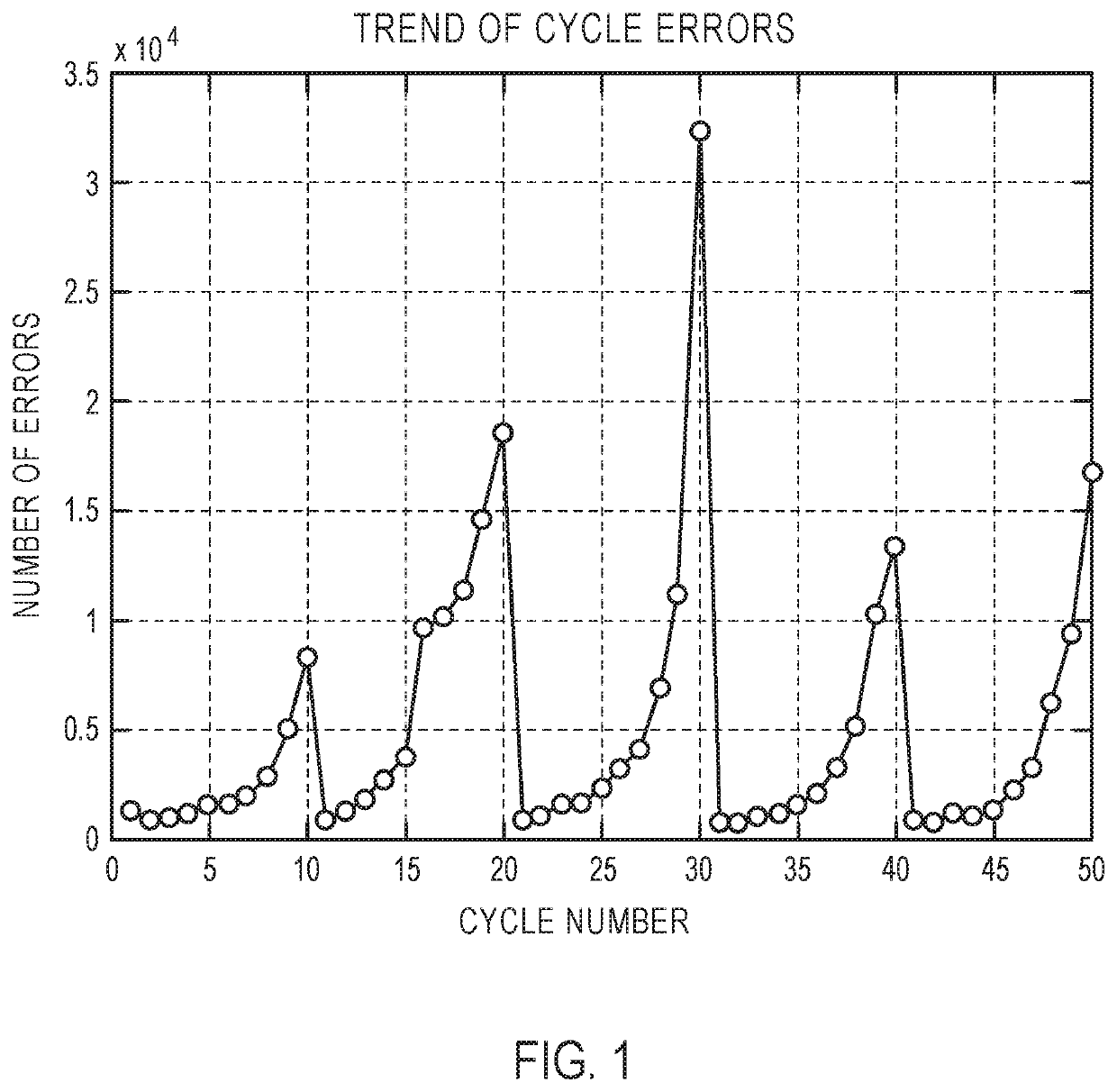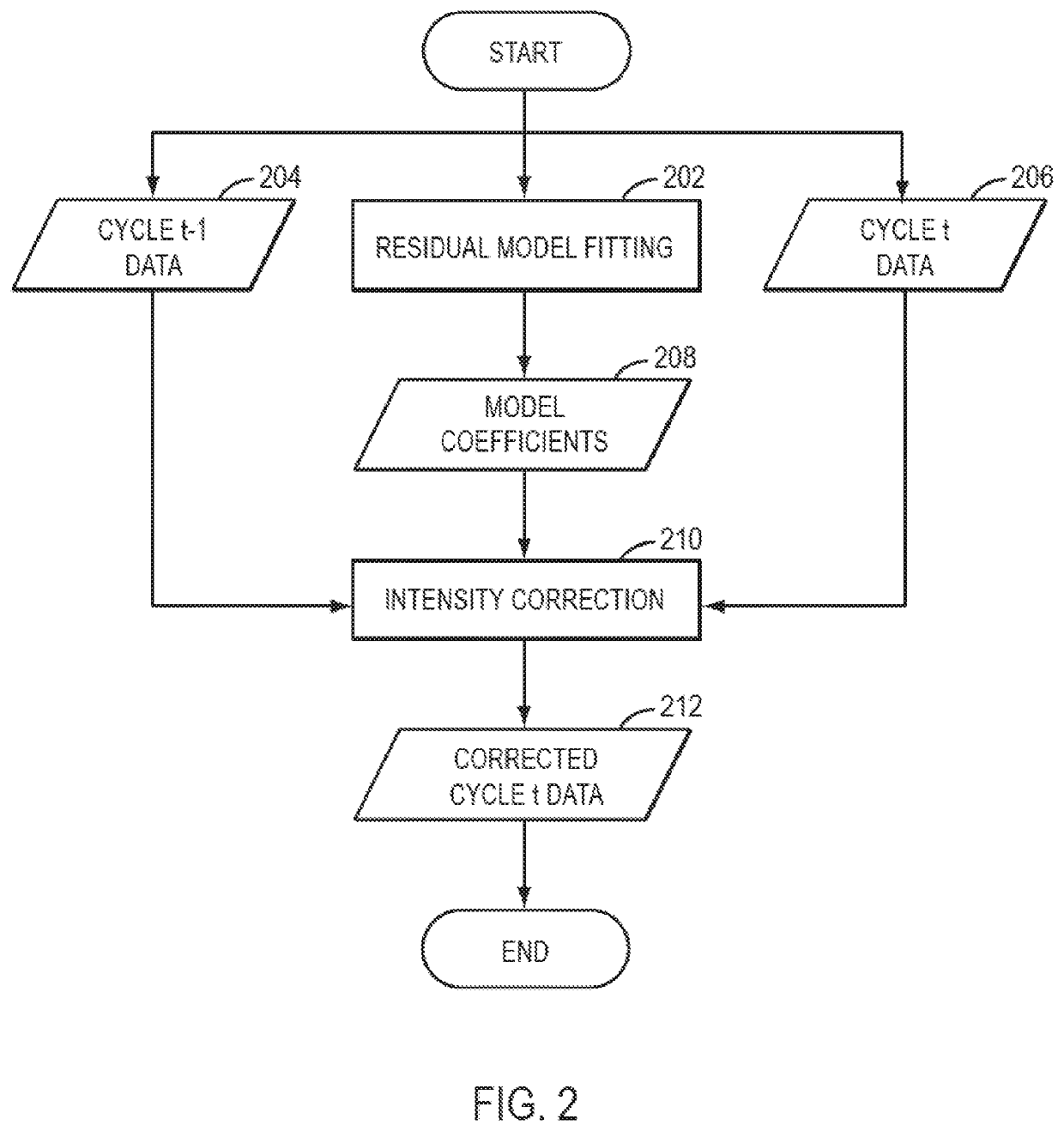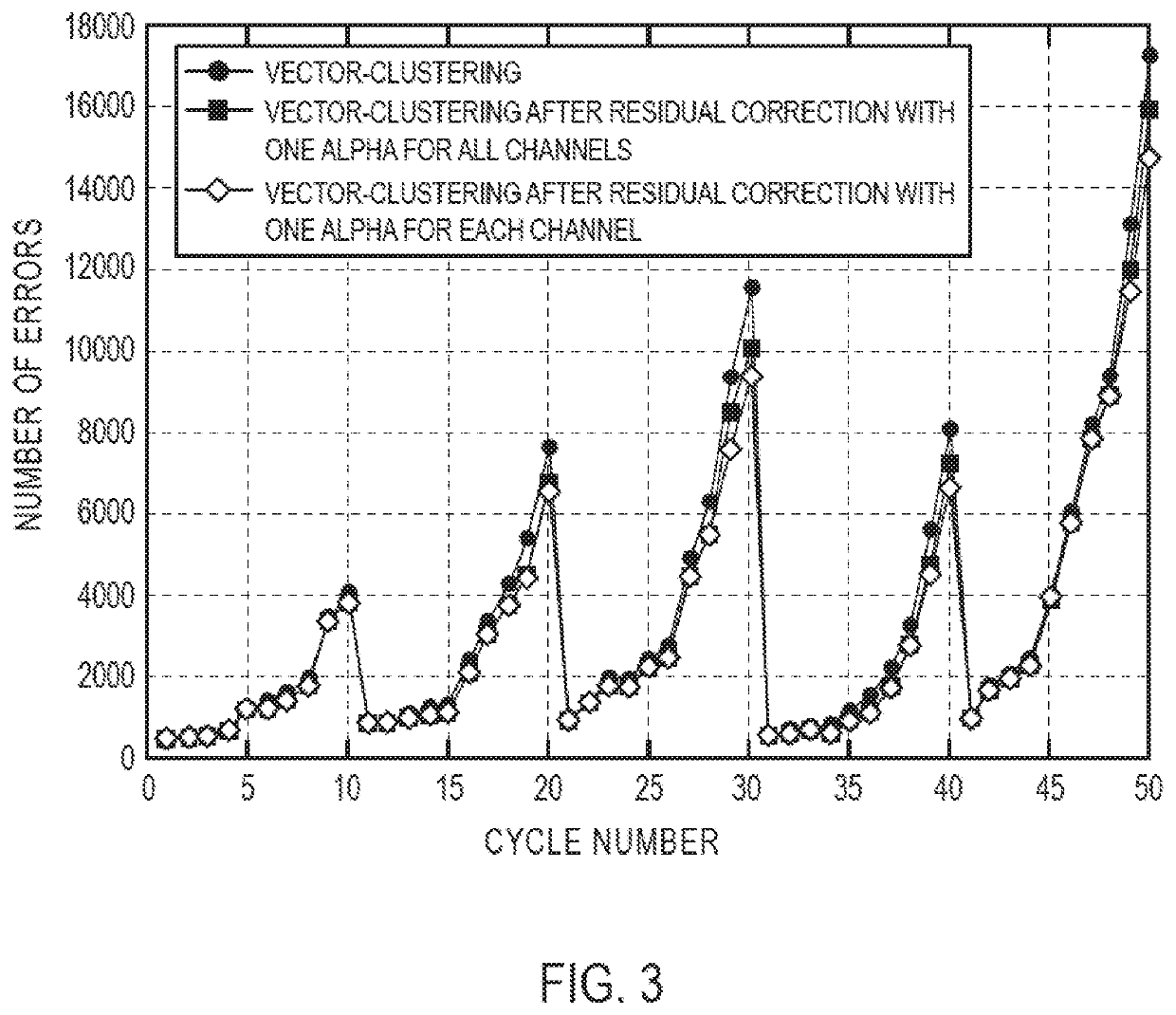Model-based residual correction of intensities
a residual correction and intensity technology, applied in the field of polynucleotide sequencing, can solve the problems of large data generation, large amount of data generated, and high cost of sequencing runs performed on platforms
- Summary
- Abstract
- Description
- Claims
- Application Information
AI Technical Summary
Benefits of technology
Problems solved by technology
Method used
Image
Examples
examples
[0080]FIG. 3 illustrates exemplary data showing a comparison of the number of errors per cycle when no residual correction is performed, when residual correction is performed using a channel independent a, and when residual correction is performed using a channel independent a. The use of residual correction with a channel independent a resulting in a 7.6% reduction in the number of errors per cycle compared to no residual correction. Residual correction with a channel dependent a resulted in 11.4% reduction of errors compared to no residual correction.
[0081]FIG. 4 illustrates exemplary data showing a comparison of the number of errors per cycle when no residual correction is performed (solid lines), when residual correction is performed without a background difference term (lines with circles in the top panel), and when residual correction is performed with a background difference term (lines with circles in the bottom panel). The use of the background difference term provides sign...
PUM
| Property | Measurement | Unit |
|---|---|---|
| homogenous | aaaaa | aaaaa |
| Nucleic acid sequencing | aaaaa | aaaaa |
| Nucleic acid sequence | aaaaa | aaaaa |
Abstract
Description
Claims
Application Information
 Login to View More
Login to View More - R&D
- Intellectual Property
- Life Sciences
- Materials
- Tech Scout
- Unparalleled Data Quality
- Higher Quality Content
- 60% Fewer Hallucinations
Browse by: Latest US Patents, China's latest patents, Technical Efficacy Thesaurus, Application Domain, Technology Topic, Popular Technical Reports.
© 2025 PatSnap. All rights reserved.Legal|Privacy policy|Modern Slavery Act Transparency Statement|Sitemap|About US| Contact US: help@patsnap.com



